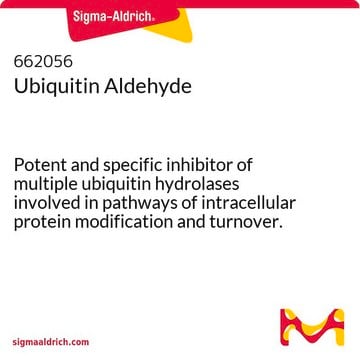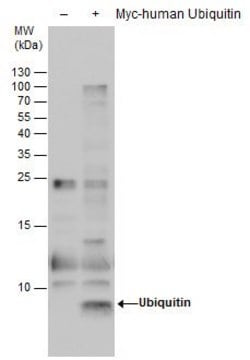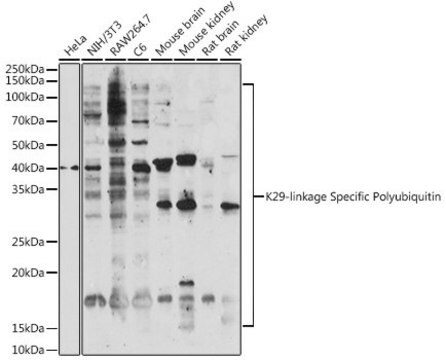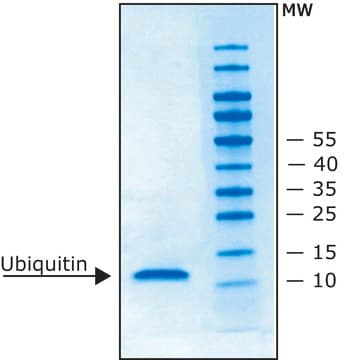SRP6024
Ubiquitin Aldehyde human
recombinant, expressed in E. coli, ≥95% (HPLC)
About This Item
Recommended Products
biological source
human
recombinant
expressed in E. coli
assay
≥95% (HPLC)
form
liquid
mol wt
8.5 kDa
packaging
pkg of 50 μg
technique(s)
protein purification: suitable
impurities
Endotoxin, tested
NCBI accession no.
UniProt accession no.
shipped in
dry ice
storage temp.
−70°C
Gene Information
human ... UBA2(7311)
General description
Application
Biochem/physiol Actions
Physical form
Storage Class
12 - Non Combustible Liquids
wgk_germany
WGK 3
flash_point_f
Not applicable
flash_point_c
Not applicable
Choose from one of the most recent versions:
Certificates of Analysis (COA)
Don't see the Right Version?
If you require a particular version, you can look up a specific certificate by the Lot or Batch number.
Already Own This Product?
Find documentation for the products that you have recently purchased in the Document Library.
Active Filters
Our team of scientists has experience in all areas of research including Life Science, Material Science, Chemical Synthesis, Chromatography, Analytical and many others.
Contact Technical Service








